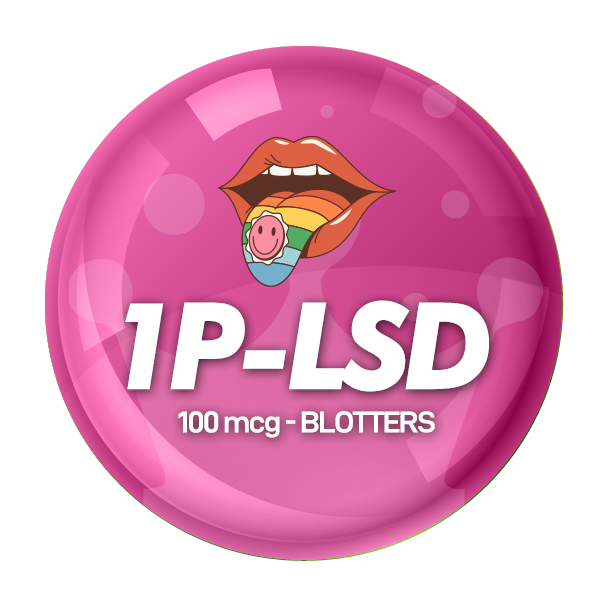Exploring Lysergamides: The Science, Potential, and Uses in Research
Lysergamides have captured the curiosity of researchers worldwide, acting as a fascinating bridge between chemistry and neuroscience. These compounds, chemically related to the well-known lysergic acid diethylamide (LSD), belong to a family of substances that share similar core structures and often exhibit powerful psychoactive effects. But the appeal of lysergamides extends far beyond their reputation; their influence on serotonin receptors and potential to aid in studying consciousness, perception, and mental health disorders has driven a surge of interest within the research community.
In this article, we’ll dive into the science behind lysergamides, examine their history, investigate their diverse applications in research, and discuss why they remain a pivotal area for scientific exploration.

The Chemistry of Lysergamides
At a molecular level, lysergamides are derived from lysergic acid, a naturally occurring compound found in ergot, a type of fungus that grows on rye and other grains. These substances are unique due to their specific molecular configuration, which allows them to interact closely with serotonin receptors in the brain. The structure of lysergamides consists of a core lysergic acid structure connected to various functional groups, which can result in a variety of effects when studied in controlled laboratory environments.
This chemical backbone is what gives lysergamides their distinct properties. Each variation in molecular structure among lysergamides produces different effects and potencies, which researchers find invaluable in studying how structural changes influence interactions with brain receptors. Among the most well-known lysergamides is LSD, although many other lesser-known derivatives have piqued researchers’ interest, offering unique chemical and behavioral insights.
Historical Context: From Ergot to Modern Laboratories
The roots of lysergamide research trace back to ancient practices, as ergot was used in small doses by various cultures due to its physiological effects. In modern times, the journey began when Albert Hofmann, a Swiss chemist, synthesized LSD in 1938 while studying ergot derivatives for medicinal purposes. Hofmann’s work transformed the scientific community’s view of lysergamides, leading to the exploration of various derivatives and their potential applications.
In the 1950s and 1960s, research into LSD and other lysergamides boomed, particularly in the fields of psychiatry and psychology. Researchers believed that these compounds could unlock new ways to treat disorders like depression, anxiety, and even addiction. Although regulatory shifts in the 1970s led to tighter controls, the 21st century has seen a resurgence in interest surrounding lysergamides and their potential therapeutic benefits, with scientists now seeking to unravel their effects with greater rigor and precision.

We sell our products exclusively to customers aged 18 and over, strictly for research purposes only.

Mechanisms of Action: How Lysergamides Interact with the Brain
One of the most compelling aspects of lysergamides is their interaction with the brain’s serotonin (5-HT) receptors, particularly the 5-HT2A receptor subtype. Serotonin receptors are integral to mood regulation, perception, and cognition, and lysergamides’ affinity for these receptors allows them to modulate these functions in significant ways.
When lysergamides bind to these receptors, they trigger a cascade of cellular events that can lead to altered sensory perceptions, mood changes, and, in some cases, profound shifts in consciousness. This unique ability to influence perception and cognition has made lysergamides central to studies aimed at understanding the neurobiological foundations of mental health and consciousness.
For researchers, exploring these interactions opens doors to new treatments. For example, by analyzing how lysergamides affect serotonin pathways, scientists hope to develop innovative treatments for disorders where serotonin imbalance plays a critical role, such as depression and anxiety.
The Role of Lysergamides in Modern Research
While the past focus on lysergamides was primarily on their psychoactive effects, modern research is looking beyond this, examining how these compounds can be applied in therapeutic settings. Controlled studies are exploring whether lysergamides could play a role in treating PTSD, addiction, and other psychological conditions by enabling patients to process traumatic memories or altering harmful behavioral patterns.
Studies have also shown that lysergamides may have “neuroplastic” properties, meaning they could promote the brain’s ability to reorganize itself by forming new neural connections. This potential for neuroplasticity makes them a subject of intense interest, as it hints that these compounds might help the brain “retrain” itself in cases of mental health conditions where thought patterns become rigid or maladaptive.
One emerging field is psychopharmacology, where researchers investigate the precise ways in which lysergamides could help individuals confront emotional challenges. In this context, lysergamides are seen not only as tools to unlock the mind’s mysteries but as potential therapeutic agents that could one day complement traditional treatments for mental health disorders.

Challenges and Ethical Considerations in Lysergamide Research
Conducting research on lysergamides is not without its challenges. Many lysergamides are regulated under controlled substances laws in various countries, meaning that accessing them for research purposes requires rigorous approvals and adherence to strict legal protocols. These regulations are in place to ensure safe and ethical use, as lysergamides can be potent and may carry risks if misused.
Additionally, the ethical considerations surrounding psychoactive compounds mean that researchers must prioritize safety and informed consent, especially in studies involving human participants. There is a delicate balance between pushing the boundaries of scientific knowledge and ensuring that participants are fully aware of the potential risks and benefits.
These regulatory and ethical frameworks are essential to ensuring that research progresses responsibly. Despite these hurdles, scientists are optimistic about the role of lysergamides in advancing our understanding of the brain and mental health.
Chemistry King’s Role in Supporting Responsible Lysergamide Research
As interest in lysergamides grows, reputable suppliers like Chemistry King play a critical role in supporting research by providing high-purity research chemicals. Chemistry King offers a selection of compounds exclusively for scientific study, ensuring that researchers have access to materials that meet rigorous standards of purity and safety. This dedication to quality is vital in studies involving sensitive compounds like lysergamides, where the purity and composition of the substances can directly impact research outcomes.
Chemistry King’s streamlined ordering process, along with their commitment to discreet, same-day shipping within Europe, makes it easier for researchers to access the materials they need. By supporting both novice and seasoned scientists with educational resources, including guides on cryptocurrency payments, Chemistry King is dedicated to fostering a safe, compliant, and accessible environment for lysergamide research.

The Future of Lysergamides in Science
The ongoing research into lysergamides could reshape our approach to mental health, helping us better understand the complex chemistry of the mind. As scientists continue to uncover the potential therapeutic benefits of these compounds, the future looks promising. Lysergamides may provide novel solutions to some of today’s most pressing mental health challenges, offering hope for patients and transforming therapeutic practices.
For researchers, the journey of exploring lysergamides is as captivating as the compounds themselves. With each study, scientists move closer to unlocking the secrets held within these unique molecules, advancing our knowledge of human consciousness and mental health.
FAQ and How We Can Help
Frequently Asked Questions answered here; don’t hesitate to ask more!
Lysergamides are a group of compounds derived from lysergic acid, known for their potential to influence serotonin receptors in the brain. At Chemistry King, we supply high-purity lysergamides strictly for research purposes, allowing scientists to explore their effects on perception, cognition, and mental health.
Purity is crucial because even minor impurities can impact the results of sensitive research. Chemistry King ensures all lysergamides and other research chemicals meet strict lab-tested purity standards to deliver consistent, reliable results for researchers.
No, Chemistry King’s lysergamides and other products are sold strictly for scientific research and are not intended for personal or recreational use. Our mission is to support legitimate scientific exploration in controlled environments.
Yes, we offer guides and resources to support researchers, including information on safe handling, storage, and even cryptocurrency payment options for convenience. Chemistry King is committed to being a knowledgeable partner in your research journey.


